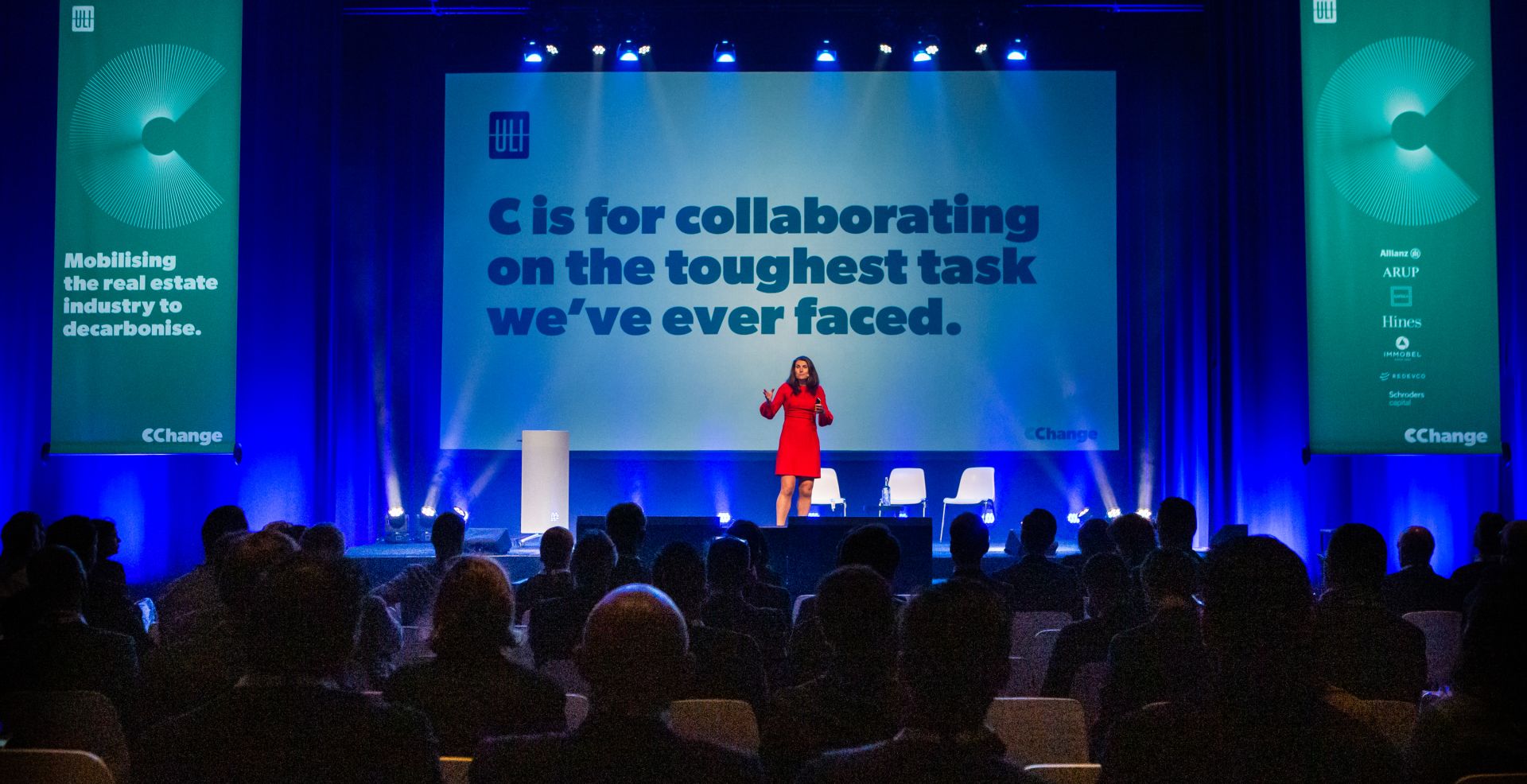
Today, the real estate industry is increasingly focusing on the importance of decarbonisation in combating climate change. This article explores the various aspects of a low-carbon transition in real estate, including the role of the Urban Land Institute (ULI) Europe and its CEO, Lisette van Doorn, in initiating a shift in the sector.
ULI is a driving force in the real estate industry. With a membership of over 48,000 professionals across Europe, Asia Pacific and America, the organisation focuses on knowledge sharing and collaboration among public and private actors. Their mission is to shape the future of the built environment for transformative impact in communities worldwide. Decarbonisation has been identified as one of three mission priorities.
As the world’s largest asset class, the sector has a significant impact on the environment and is a key focus in the fight against climate change. From a regulatory and responsibility perspective, it is our licence to operate. “Decarbonisation is not just about reducing emissions, it’s about creating a sustainable future for the real estate industry and the communities we serve,” says Lisette.
The C Change initiative, spearheaded by ULI Europe, aims to speed up the process of getting the built environment to net zero emissions. “C Change is about making a collective impact in the real estate industry by providing practical solutions, guidelines and tools to accelerate decarbonisation efforts,” explains Lisette.
“Collaboration and sharing knowledge are key when it comes to decarbonisation. There’s already so much happening in the industry, but by working together, we can achieve more and make a real difference in the fight against climate change.”
Among the key priorities to decarbonise real estate, retrofitting existing property is one of the most important. This requires, for example, incorporating transition risks into real estate valuations and using carbon pricing as a lever for investment and helping to build the business case. ULI Europe has brought together a wide range of industry participants to share best practices and develop guidelines to address those systemic barriers. This practical approach involves working with various industry actors, such as investors, technical engineers, developers and banks.
An essential decarbonisation process
“Retrofitting existing buildings is a crucial step in the decarbonisation process, given that 85% of the buildings existing today will still be there in 2050 and buildings’ obsolescence will accelerate,” says Lisette. “It not only reduces emissions but also provides an opportunity to improve the overall quality of the built environment and communities, turning transition risk into an opportunity.”
By developing guidelines and tools to incorporate transition risks into real estate valuations, ULI provides guidance to companies toward sustainable practices and long-term value creation, increasing investor and stakeholder confidence.
Often underestimated and still barely used in our sector, carbon pricing is another important tool to support decarbonisation. By putting a price on carbon, it incentivises businesses to reduce their emissions and support the business case to invest in low-carbon technologies. “Mainstreaming carbon pricing will send a clear signal to the market about the increasing cost of inaction, encouraging faster adoption of sustainable practices,” says Lisette.
The decarbonisation of real estate is a complex and ongoing process and doesn’t stand on its own, but it is essential for the future of our planet and communities. ULI Europe, led by Lisette van Doorn, is playing a vital role in speeding up this transition. “The real estate industry has a responsibility to lead the way in these efforts,” concludes Lisette. “By working together, we can create a cleaner, greener and more prosperous future for all.”

